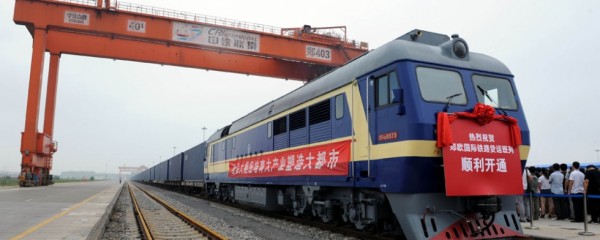22
Jul 2013
New Rail Cargo Zhengzhou-Hamburg
Responding to rising trade volumes, Zhengzhou, a business and logistic center in Central China, has started rail service to Hamburg, Germany.
The train takes 18 days to make the 10,214-kilometer trip, but that’s more than twice as fast as maritime transport. It can also effectively save 80 percent of the cost compared with air shipments, and it’s about $489 cheaper on average compared with road transportation, which is a major incentive for the Eurasian Land Bridge, also dubbed New Silk Road.
The route reaches Germany via Kazakhstan, Russia, Belarus and Poland. Zhengzhou International Inland Port Development Co Ltd is responsible for cooperating with partner rail companies in each country.
The containers have to be transferred by crane to different gauges twice. First comes a change to the Russian style broad gauge line at the Kazakhstan-China border at Alashankou, in northeastern China’s Xinjiang Uygur autonomous region. The second is a transfer to standard gauge at the Polish-Belarusian border.
DB Schenker, the transport and logistics arm of Deutsche Bahn (Germany’s national railway) is the rail route’s main partner outside China. It provides gauge transfer and technical services through its service network in Central Asia and East Europe after the trains leave China.
The Zhengzhou-Europe freight route will be joined by three other cargo rail services by year end. Henan will be able to transport goods to Almaty in Kazakhstan, Moscow and the port city of Klaipeda in Lithuania through this route.
It was said that the rail freight using the Eurasian land bridge will speed up access to key markets in Europe.
The first freight train had 41 containers, including 11 containers of vehicle parts, industrial yarn, high-end shoes and clothing en route to Hamburg, 29 containers of abrasive headed to Belgium’s Antwerp and one container of garments destined for Rotterdam, the Netherlands. The goods are valued at $2.33 million.
Zhengzhou’s importance as an economic driver in China’s central region has been growing in recent years, and it is emerging as the next high-tech manufacturing area in China.
See more at: http://www.sbeintl.com































